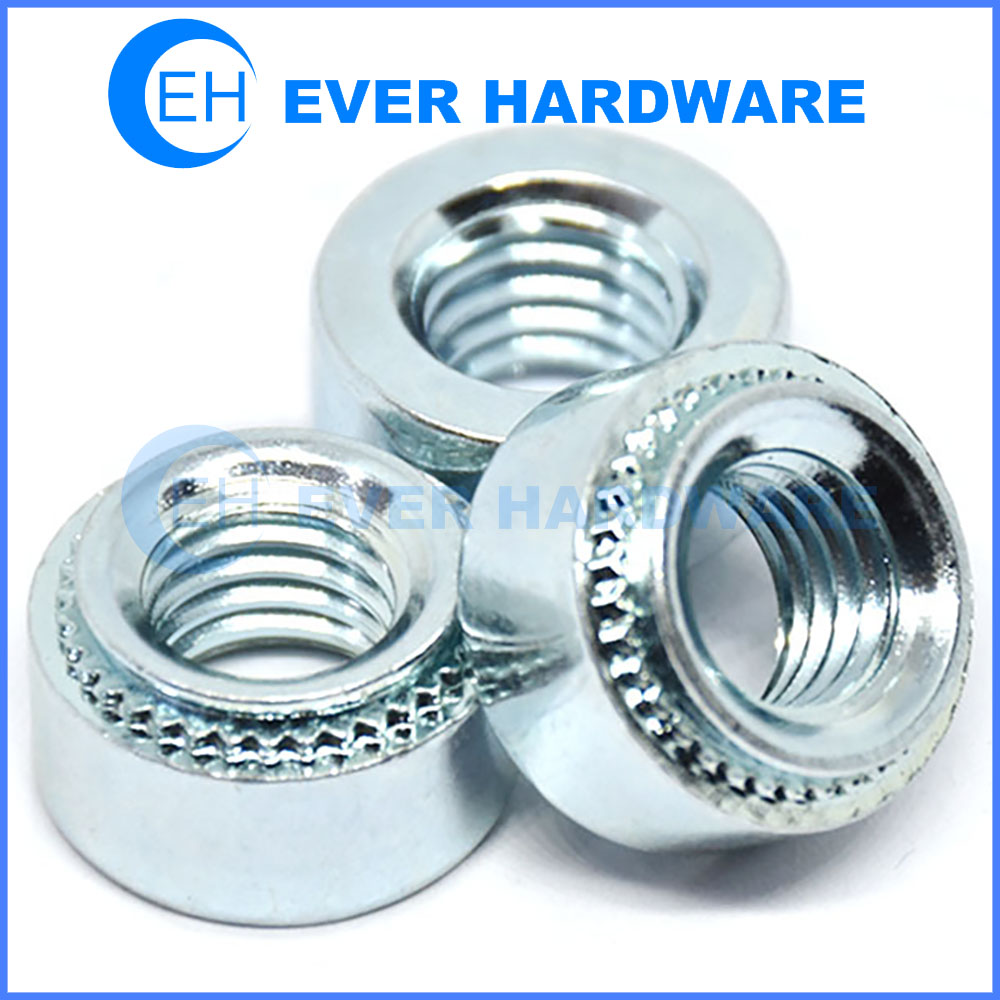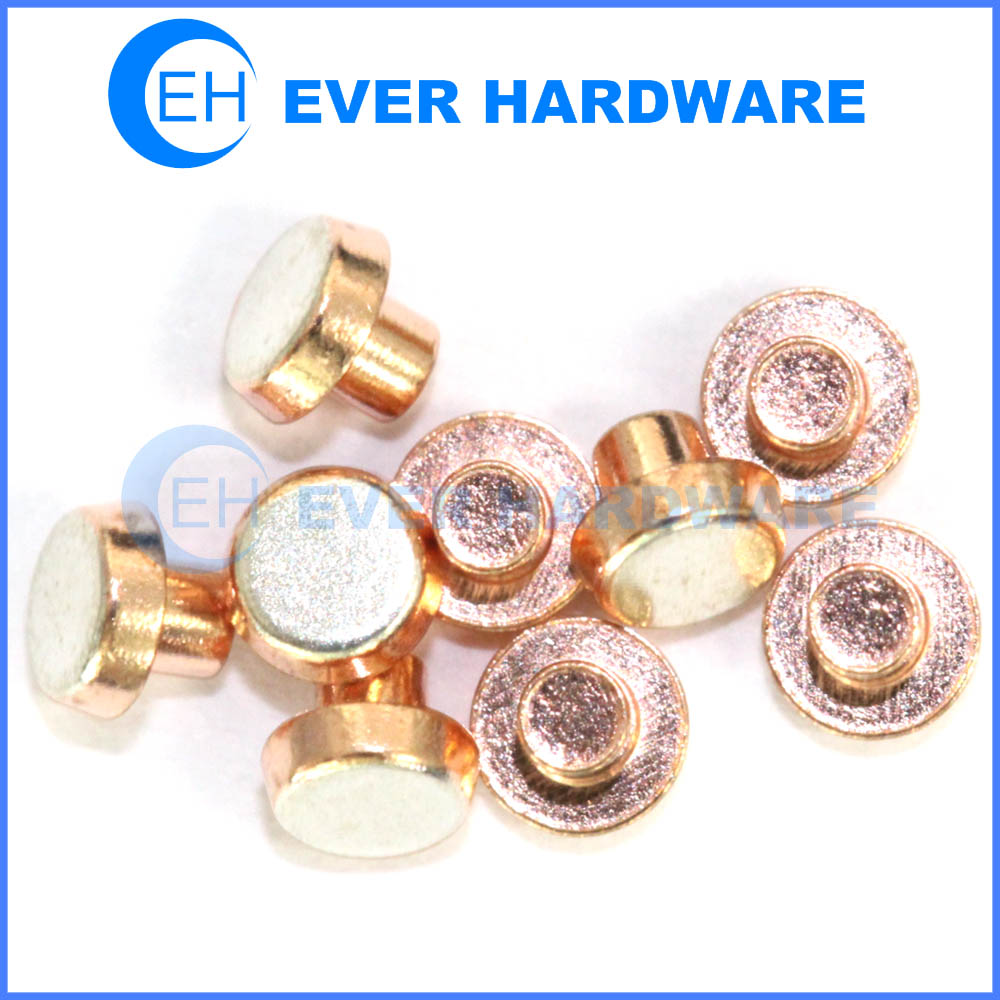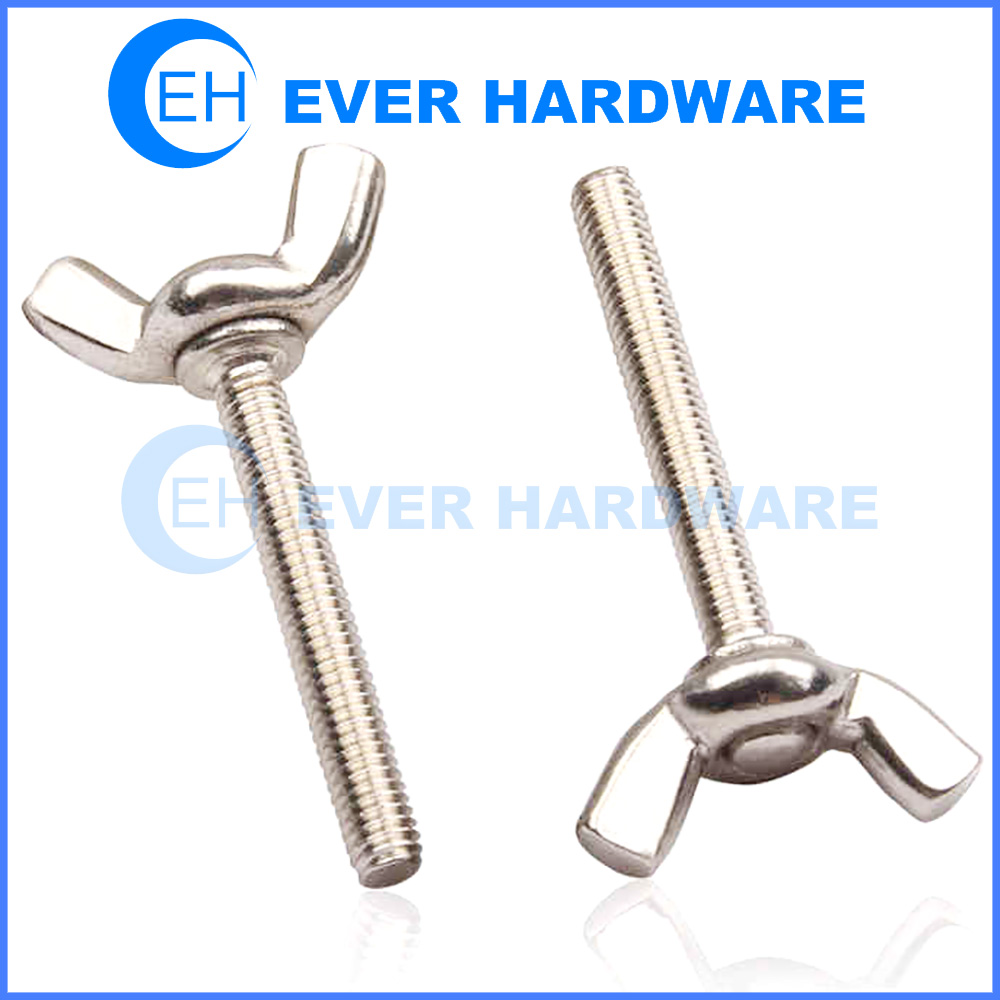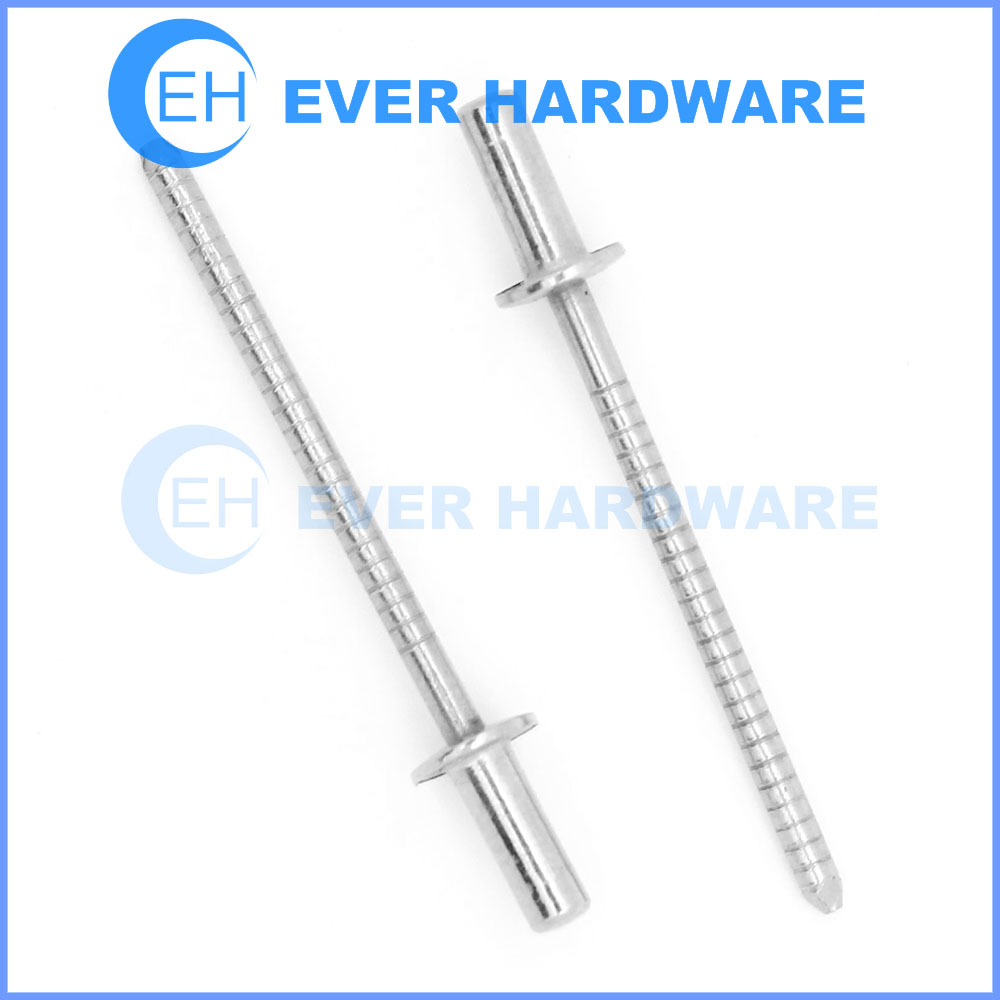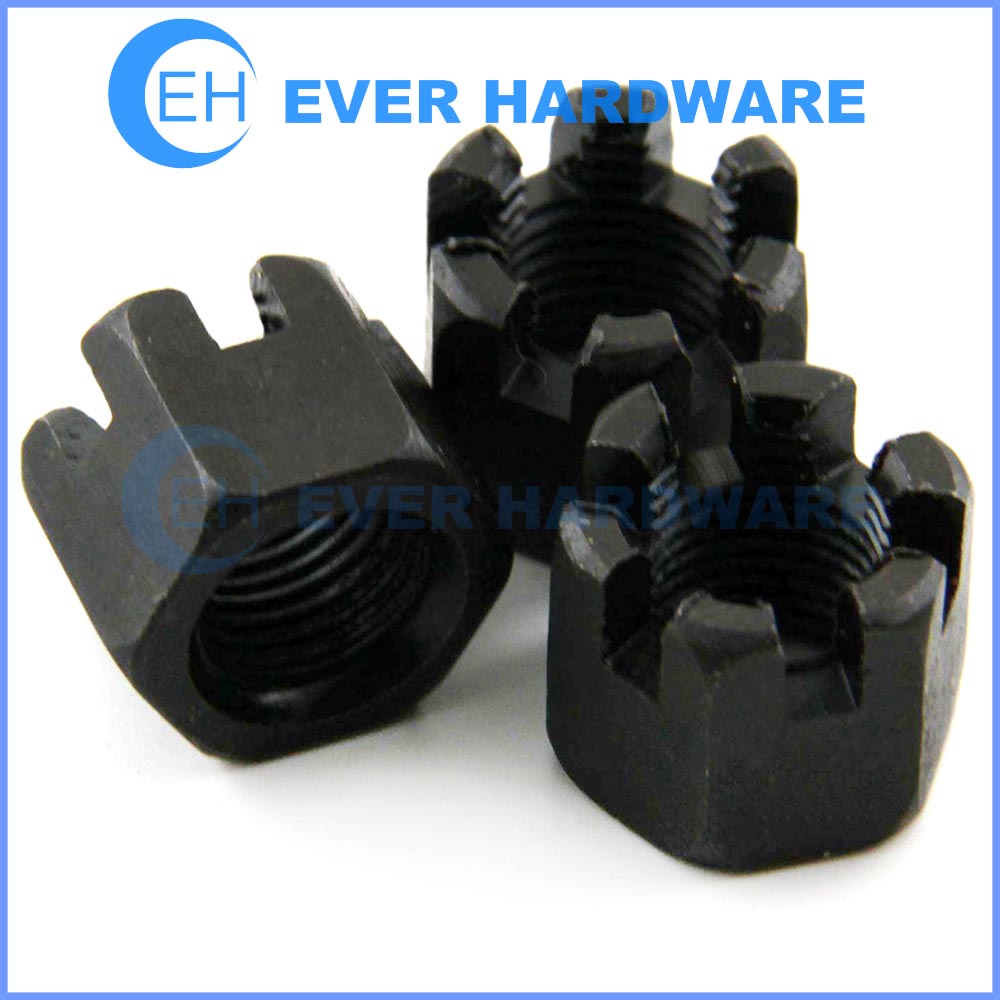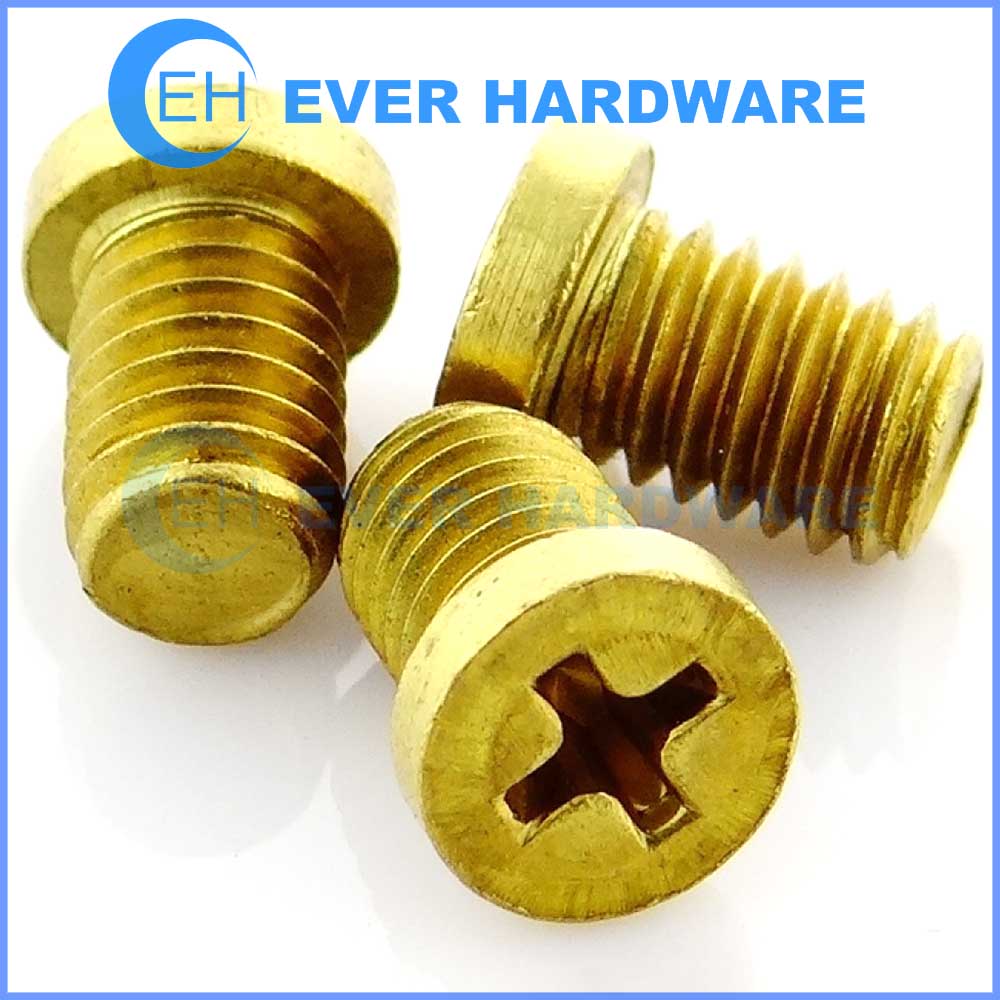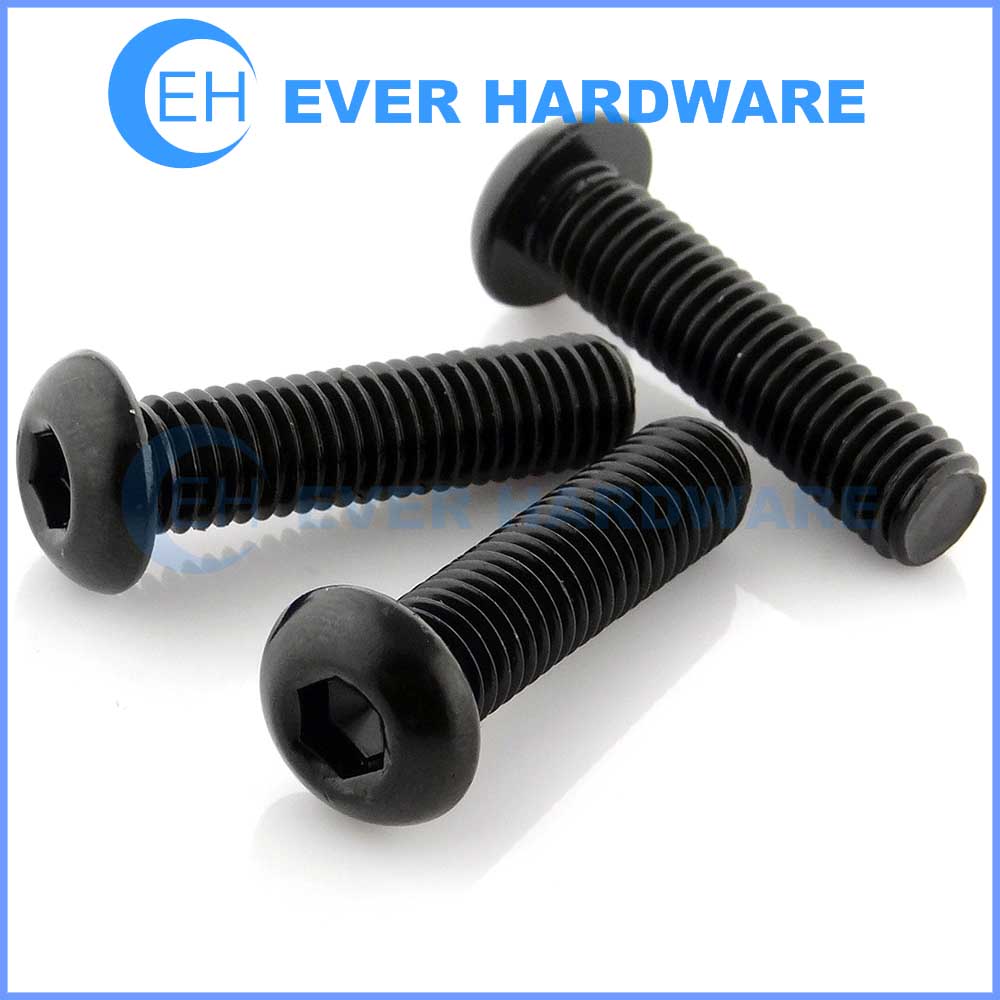A rivet is a permanent mechanical fastener. Before being installed, a rivet consists of a smooth cylindrical shaft with a head on one end. The end opposite to the head is called the tail. On installation, the rivets are placed in a punched or drilled hole, and the tail is upset or bucked (i.e., deformed), so that it expands to about 1.5 times the original shaft diameter, holding the rivets in place. In other words, pounding creates a new “head” on the other end by smashing the “tail” material flatter, resulting in a rivet that is roughly a dumbbell shape. To distinguish between the two ends of the rivets, the original head is called the factory head and the deformed end is called the shop head or buck-tail. Ever Hardware provides custom-made fasteners and customizable packaging.
Because there is effectively a head on each end of an installed rivet, it can support tension loads (loads parallel to the axis of the shaft); however, it is much more capable of supporting shear loads (loads perpendicular to the axis of the shaft). Bolts and screws are better suited for tension applications. Ever Hardware provides custom made rivets and customizable packaging.
Fastenings used in traditional wooden boat building, such as copper nails and clinch bolts, work on the same principle as the rivet but were in use long before the term rivet was introduced and, where they are remembered, are usually classified among nails and bolts respectively.
Common rivets head styles are oval, truss, button, flat and countersunk. Among the raw materials used are steel, stainless steel, aluminum, brass, and copper. Rivets plating and coating options are selected by the end-user dependent on the application.
Semi-tubular and tubular rivets are excellent fasteners to quickly and inexpensively join work-piece materials together. The tubular portion of the rivet may be fastened to a tight or loose (hinged assemblies) fit depending on the application. Riveted work-pieces are most often joined together by impacting or compressing the tubular end of the rivets with a crimping die (rivet anvil). The length of the rivet shank must be long enough to pass through the work-piece with enough shank length left over for the clinching process. The tightness of the clinched joint is determined by the amount of force applied to the clinched end of the rivets and can easily be adjusted.
contact to ric.sun@ever-hardware.com
| Category | Rivet |
|---|---|
| Finish | Electro-Plating |
| Thread type | Metric/Imperial/According to Request |
| Material | Stainless Steel/Carbon Steel/Aluminum/Brass/Copper, etc. |
| Brand | Ever Hardware |
| Place of origin | China Mainland |
| Size | Customized as required |
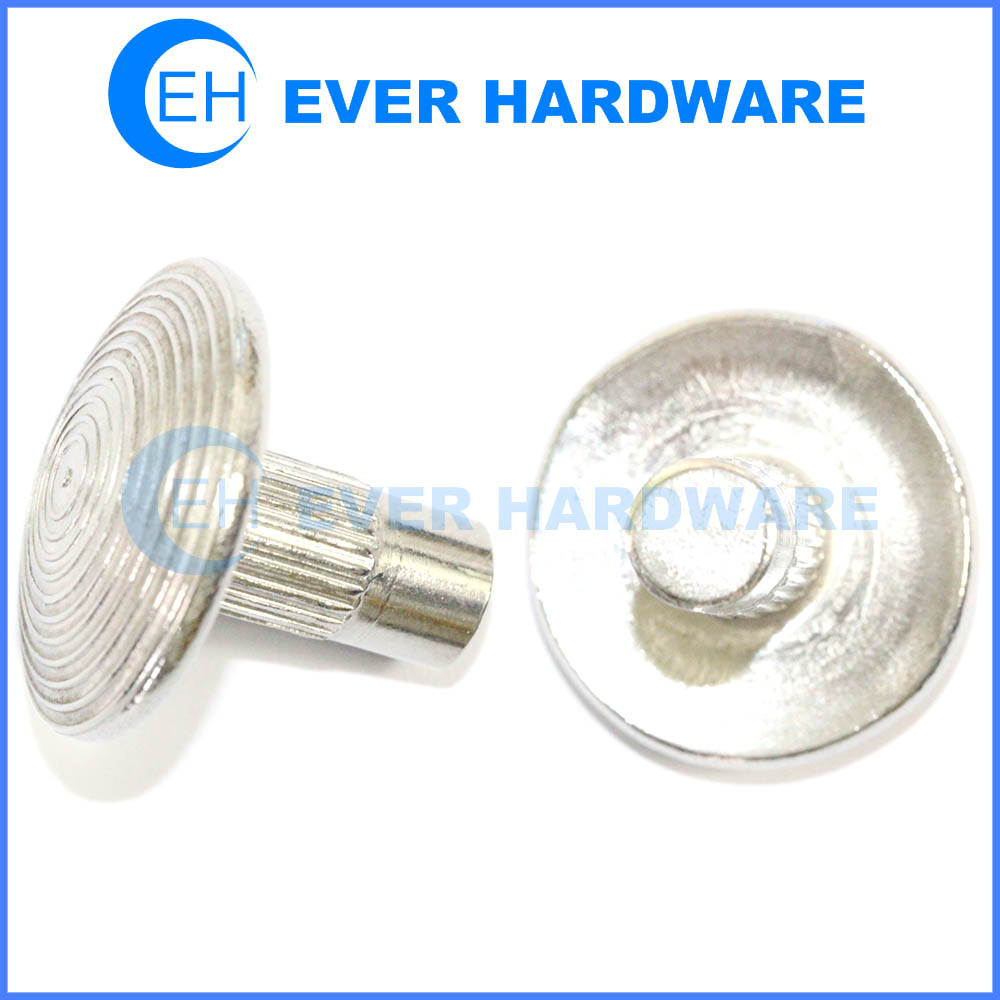
Amazing Product: Get It Now!
This is where your amazing product custom-made from!
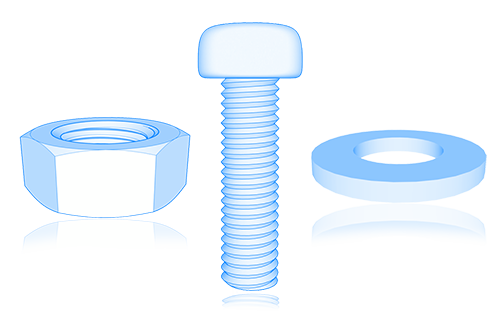
How To Place An Order
What Client’s Say
Those look great! All the specs look perfect.
Perfect ! This is that I need.
Thank you very much.
The bolts are perfect and they’re fits good.
The nut fits perfect on our M2.5 screw part.
Height is also ok.
I tested the bolts this morning and they are perfect. Thank you so much.
We are professional on precision rivet and custom-made fasteners services!
This is where your amazing product design can go so your clients can feel all about the features and see how awesome it is!

